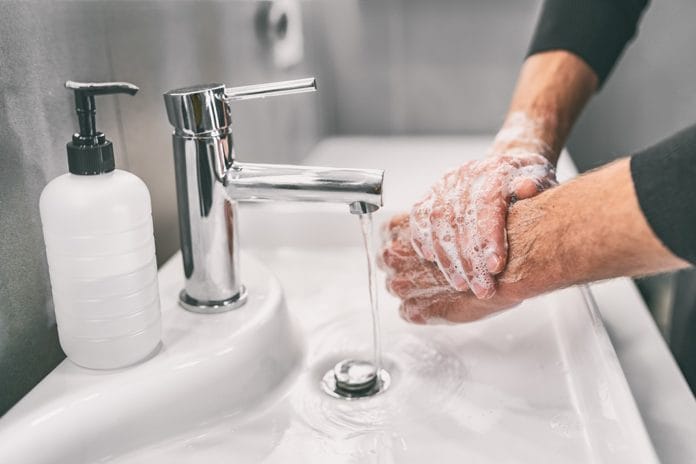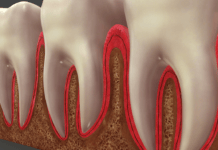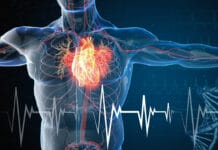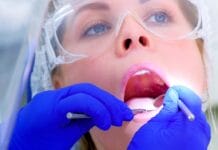Editor’s Note: Information about COVID-19 is changing on a daily, sometimes hourly, basis. We have made every attempt to ensure this article is up-to-date at the time of publication, but with the rapid changes occurring, some information may have changed since publication. Please visit https://www.coronavirus.
If you have watched TV, listened to the radio, or read a local newspaper, you are probably very aware that the coronavirus, COVID-19, has invaded the United States, and the President has declared a national state of emergency. Travel bans are in place, quarantines are in effect, schools and universities have canceled classes, bars and restaurants are closed, major sporting events are canceled, people are working from home when possible, and proper hand hygiene and social distancing is strongly encouraged.1
Most recently, the American Dental Association on March 16, 2020, released a statement recommending that dental offices postpone all elective treatment for at least three weeks, which probably affects a great number of hygienists.12
Is this worrisome? Absolutely! People have bills to meet and need to work; we all want to take care of our loved ones. Just look at your local grocery store for proof of that. Cleaning supplies, toilet paper, bleach, and wipes are all off the shelves, nor can you order most of these products online because people are nervous, anxious, and want to protect themselves and their loved ones. It is totally understandable that we, as a society, want to do all we can to be safe and provide and protect our families to the best of our abilities.
With the apprehension about this evolving disease, the dental community has so many questions about how we should react and be prepared for the safety of our patients and ourselves. Granted, this virus is now deemed a pandemic and is a different strain of the coronavirus then we’ve seen before.
If your office is still open for emergency procedures, knowing these facts, there are some new protocols being recommended to help identify potential patients of concern for COVID-19. These include taking temperatures on all patients, asking that patients arrive on time and stay in their cars until the dentist (or hygienist, if your office is not following recommendations to postpone elective procedures) is ready to see them to limit patients being exposed to one another in waiting areas, patients should be asked about any recent travel outside of or within the US in the past month, ask if patients have come in contact with a COVID-19 patient, and any flu-like symptoms patients may be experiencing. If the answer to any of the earlier questions are yes, the patient should be rescheduled in three weeks for everyone’s safety.
If you do see patients, have them use a hand sanitizer before entering clinical areas, have the patient pre-rinse for one minute with 1% hydrogen peroxide, universal precautions, and use of an N95 mask is recommended.3
It is important to remember that as dental professionals, we are on the front lines with potentially dangerous viruses and illnesses on a daily basis, including hepatitis B, N1HI, HIV, influenza, varicella, and HPV. Some patients don’t realize they are infectious, and some just flat out won’t tell you their health problems. Both types of patients put us at risk; that is why we are to treat every patient as if they are infectious all the time.
With this topic being at the forefront of our news and daily lives, I felt it was a good time to review our standard precautions when treating dental patients (even if just a review for those not treating patients at this time), realizing of course that COVID -19 is ever developing and we are learning new information as to how to deal with this particular virus. In no way can I go into all the specifics with every topic regarding these precautions, but this is intended to be a general overview. Review your OSHA and CDC recommendations for specific questions that may not be answered here.7,8
The Basic Precautions
Standard precautions are the minimum infection prevention practices that apply to all patient care, regardless of suspected or confirmed infection status of the patient, in any setting where health care is delivered. These practices are designed to both protect dental health care providers (DHCP) and prevent DHCPs from spreading infections among patients. Standard precautions include:
- Hand hygiene.
- Use of personal protective equipment (e.g., gloves, masks, eyewear).
- Respiratory hygiene/cough etiquette.
- Sharps safety (engineering and work practice controls).
- Safe injection practices (i.e., aseptic technique for parenteral medications).
- Sterile instruments and devices.
- Clean and disinfected environmental surfaces.2
These precautions are essential in helping to prevent the transmission of disease within our work setting. Hand hygiene is the most important measure to prevent the spread of infections among patients and DHCPs, use a surgical scrub method with soap and water for two minutes.2
Personal protective equipment (PPE) refers to wearable equipment that is designed to protect DHCPs from exposure to or contact with infectious agents. PPE that is appropriate for various types of patient interactions and effectively covers personal clothing and skin likely to be soiled with blood, saliva, or other potentially infectious materials should be available. These include gloves, face masks, protective eyewear, face shields, and protective clothing (i.e., reusable or disposable gown, jacket, laboratory coat).2
The CDC has not changed its guidance on single-use disposable face masks, which should be worn for only one patient then discarded.10 Be sure to choose the appropriate level masks for the treatment you are providing. Masks are available in ASTM level 1, 2 and 3 and N95 with respirators. Gloves also are single-use, cannot be reused.9 Gowns should be disposed of at the office and lab coats left at the office to be laundered. The agency urges dental personnel who are concerned about the supply of personal protective equipment to monitor the CDC’s health care supply of personal protective equipment webpage for updated guidance.3
Treatment Considerations
Respiratory or cough etiquette includes a notice to patients to cover their coughs, providing tissues, a no-touch receptacle for used tissues, hand hygiene, and postponing non-emergent treatment for patients who are symptomatic with any flu-like issues and can transmit disease through droplet airborne or contact transmission.2 A consideration with COVID-19 is to possibly refrain from ultrasonic use and air polishers with patients due to droplet and aerosols that are produced in an effort to limit exposure to our patients and ourselves as providers if you are still treating patients.6 It must be noted that biofilm disruption using ultrasonic instrumentation is best practice for giving the highest standard of care. However, because it is not recommended at this time, patients should be made aware of the change in treatment protocols, so they understand the level of care they are receiving.
Sharps safety includes considering all needles, scalers, burs, wires, and similar items that are contaminated with blood and saliva as potentially infectious and establish practices to prevent injuries. Do not recap used needles with both hands; rather, use a one-hand scoop technique or a barrier device that protects the user when recapping. Used items should be discarded in the appropriate sharps containers located as close as possible to where items are used.
Clean and reprocess (disinfect or sterilize) reusable dental equipment appropriately before use on another patient according to manufacturer instructions. If the manufacturer does not provide such instructions, the device may not be suitable for multi-patient use. Responsibilities for reprocessing of dental equipment should be delegated to DHCPs with appropriate training, adequate PPE should be worn, and mechanical, chemical and biological monitors should be used to ensure the effectiveness of the sterilization process and records in accordance with the states should be maintained.2
Cleaning and disinfecting our spaces where patients are treated are just part of normal scenario hour after hour. Even though this is second nature to most of us, let’s review the process. The CDC recommends for dental offices between patient visits that countertops and dental units must be cleaned and disinfected with an EPA registered surface disinfectant (spray, wipe, discard, wipe) or barrier protected and cleaned at the end of the day.
Surfaces such as floors and walls should be cleaned using a low-level disinfectant with detergent on a regular basis or when visibly soiled or spills occur.5 As more information is becoming available about the current COVID-19, we will likely learn more about agents that are specific to killing this virus. There is a current list of products that meet EPA’s criteria for use against SARS-CoV2, the cause of COVID-19. Visit the EPA website for a current list.4,11
In closing, the ADA urges all dental auxiliary to abide by the CDC guidelines and protocols regarding cleaning and disinfection in the dental office during and after patient care. We should be implementing and using our standard precautions daily. Maybe during this time of heightened awareness about viruses and disease, it would be a good time to review our own office policies and protocols and adjust them where needed to better be in compliance and protect ourselves, patients and those around us. Stay safe!
Now Listen to the Today’s RDH Dental Hygiene Podcast Below:
References
- Hawkins, D., Berger, M., Iati, M., Kornfield, M., Shammas, B. Trump Declares Coronavirus Outbreak a National Emergency. The Washington Post. March 13, 2020. Retrieved from https://www.washingtonpost.com/world/2020/03/13/coronavirus-latest-news/
- Standard Precautions. Centers for Disease Control and Prevention. Retrieved from https://www.cdc.gov/oralhealth/infectioncontrol/summary-infection-prevention-practices/standard-precautions.html
- Versaci, M.B. ADA Releases Handout for Dentists Based on CDC Guidelines. American Dental Association. February 24, 2020. Retrieved from https://www.ada.org/en/publications/ada-news/2020-archive/february/ada-releases-coronavirus-handout-for-dentists-based-on-cdc-guidelines
- Coronavirus Disease 2019 (COVID-19): Environmental Cleaning and Disinfection Recommendations. Centers for Disease Control and Prevention. March 6, 2020. Retrieved from https://www.cdc.gov/coronavirus/2019-ncov/community/organizations/cleaning-disinfection.html
- Environmental Surface Disinfection: CDC’s Guidelines for Dental Offices-Simplified. TDA Perks Program, Provided by OSHA Review, Inc. 2018. Retrieved from https://tdaperks.com/environmental-surface-disinfection-cdcs-guidelines-for-dental-offices-simplified/
- Interim Infection Prevention and Control Recommendations for Patients with Suspected or Confirmed Coronavirus Disease 2019 (COVID-19) in Healthcare Settings. Centers for Disease Control and Prevention. Updated March 10, 2020. Retrieved from https://www.cdc.gov/coronavirus/2019-ncov/infection-control/control-recommendations.html
- Kohn, W.G., Collins, A.S., Cleveland, J.L., Harte, J.A., Eklund, K.J., Malvitz, D.M. Guidelines for Infection Control in Dental Health-Care Settings – 2003. Center for Disease Control and Prevention. MMWR 2003; 52 (Report No. 17). Retrieved from http://www.cdc.gov/mmwr/PDF/rr/rr5217.pdf
- Medical and Dental Offices: A Guide to Compliance with OSHA Standards. United States Department of Labor, Occupational Safety and Health Administration. Retrieved from https://www.osha.gov/Publications/OSHA3187/osha3187.html
- Ostrander, S. ASTM Mask Levels: What Should Dental Hygienists Wear? Today’s RDH. Retrieved from https://www.todaysrdh.com/astm-mask-levels-what-should-dental-hygienists-wear/
- Kiser, K. Coronavirus: What Dental Professionals Need to Know about COVID-19. Today’s RDH. Retrieved from https://www.todaysrdh.com/coronavirus-what-dental-professionals-need-to-know-about-covid-19/
- List N: Disinfectants for Use Against SARS-CoV-2. United States Environmental Protection Agency. Retrieved from https://www.epa.gov/pesticide-registration/list-n-disinfectants-use-against-sars-cov-2
- ADA Press Release: ADA Calls Upon Dentists to Postpone Elective Procedures. Today’s RDH. March 17, 2020. Retrieved from https://www.todaysrdh.com/ada-calls-upon-dentists-to-postpone-elective-procedures/












